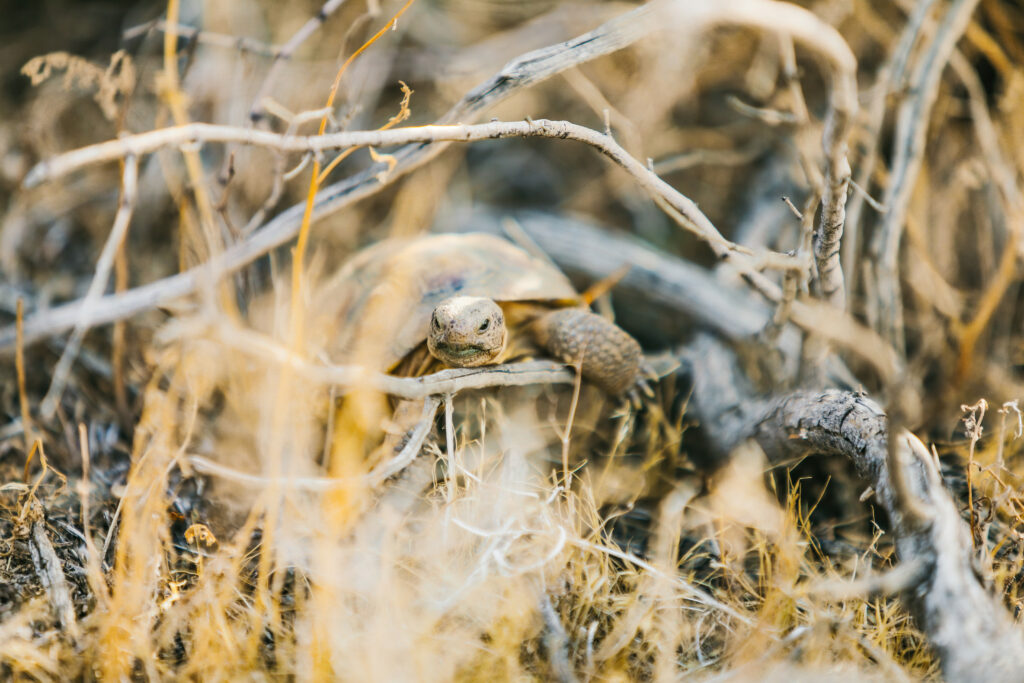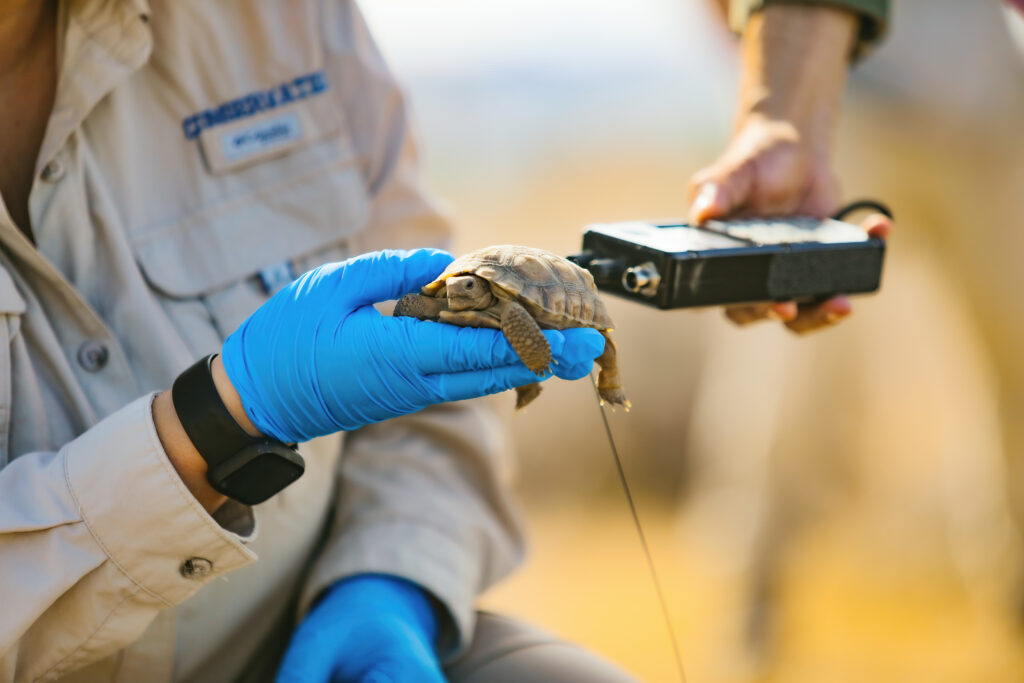The success of the Mojave tortoise reintroduction programme can provide a framework for future wildlife conservation efforts.

The successful reintroduction of 70 critically endangered tortoises into their natural habitat highlights the importance of utilising ecological and environmental knowledge in future conservation projects.
Tortoise biology
The Mojave tortoise is a species native to deserts in the southwestern US and Mexico. Once seen throughout the region, the 90% decline in population over the last 20 years has led to the designation of the tortoise as Critically Endangered on the IUCN Red List of Threatened Species. While the extinction of any organism is a great loss, the Mojave tortoise is classed as a keystone species, meaning their survival is essential for the functioning of the entire ecosystem.
By utilising studies into the biology and ecology of the Mojave tortoise, a partnership of organisations has been successful in reintroducing 70 individuals back into their natural habitat and bolstering the populations of these vital organisms.
Like many reptiles, the Mojave tortoises are ectotherms, meaning that their body temperature is dependent on their environment. In order to survive harsh desert temperatures, these tortoises dig burrows where they can shelter from the extreme heat and cold. Eggs are laid in these burrows, where the young emerge as hatchlings once they’re born. Early life isn’t easy for these young tortoises; their small size makes traversing a desert and avoiding predators incredibly difficult.
In the past, these tortoises would have been perfectly adapted for their environment, their lifecycles and behaviours in balance with predators and conditions. However, changes in climate making temperatures globally much more variable, as well as the increased presence of ravens due to nearby towns and cities, has meant that fewer and fewer hatchlings are able to survive to adulthood.
Conservation methods
An understanding of the difficulties faced by young tortoises in particular has led to The Living Desert, San Diego Zoo Wildlife Alliance and U.S. Fish and Wildlife Service opting to remove hatchlings from their burrows early and rearing them in specialised facilities for 1-2 years. This technique, dubbed ‘headstarting’ by the team, means that young tortoises are protected and can grow at much faster rates than in the wild.
“Larger tortoises are much more resistant to raven and coyote predation than smaller ones,” said James Danoff-Burg, Ph.D., director of conservation at The Living Desert Zoo and Gardens. “Our headstarting program ensures that not only normal juvenile mortality rates in the wild are reduced, so is predation. Headstarting makes reintroductions of desert tortoises more successful.”
The reintroductions of the Mojave tortoises to their habitat have been successful due to careful research into the tortoises’ lifecycles, as well as conditions within the Mojave Desert. The state-of-the-art facility for outdoor rearing at Edwards Air Force Base mimics the tortoise’s environment, enabling them to develop natural behaviours and giving them the best chance of survival in the wild.
Last week’s release of the first cohort reared using the ‘headstarting’ method back into the desert is a cause for celebration. Monitoring of the tortoises has demonstrated that they are exhibiting natural behaviours, burrowing and basking in the sun. Observing how the tortoises function within their environment has enabled the team to increase numbers and provide a framework for effectively conserving this species in the future.

The second cohort of young tortoises are now being reared at the facility, but the circumstances of their arrival are worrying. In 2023, The Living Desert were forced to excavate tortoise burrows under emergency circumstances; huge numbers of predatory insects believed to be caused by humid conditions following Hurricane Hilary attacked hatchlings, leading to injury and fatalities in these sensitive young tortoises. Veterinary care for the surviving tortoises and indoor rearing has enabled this population to survive, with hopes of re-releasing the cohort back into their habitat once they are large enough.
Extreme weather events like Hurricane Hilary are only increasing in likelihood, with the impacts on numerous species globally still largely unknown. The scale of this conservation challenge can only be faced with careful scientific research, planning and funding. Ultimately, addressing the root causes of climate change is the best strategy for the successful conservation of millions of species. Realistically however, the effects of climate change are already being seen, making the adaptability and successful collaboration demonstrated by The Living Desert, San Diego Zoo Wildlife Alliance and U.S. Fish and Wildlife Service an excellent model for species conservation within the Mojave Desert and beyond.
